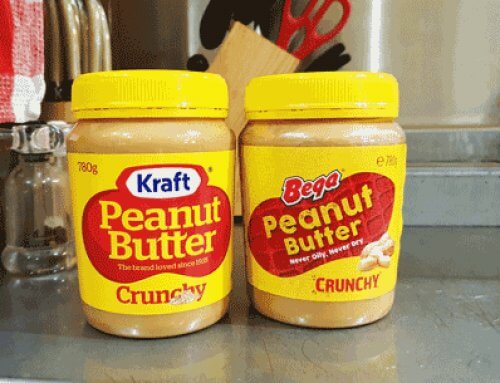
The oily business of the peanut butter wars
Cogent Legal Lawyer, Elise Steegstra, looks at the ongoing legal battle between Kraft and Bega over the right to use the ‘yellow jar’ for peanut butter.
Key Points
- Trade Marks and Branding: Does your packaging form an ‘iconic’ part of your brand? Is it protected? Does it need to be?
- Sale or Purchase of a Business: Does your purchase include IP and goodwill? Have you identified all the different IP to be assigned to the new owner?
- Company Structure: Do you want a holding company to hold valuable assets? Does goodwill comprise part of that asset? How can you transfer an unregistered right?
- Branding and Labels: Is every claim made on your packaging correct and not misleading or deceptive?
Background
Picture it, Australia, 2012. Kraft is happily running a peanut butter business that it sells its products in an iconic yellow lidded jar. (In the business, this is known as ‘get up’ or ‘trade dress’.)
The Kraft business is split into two and the peanut butter business was transferred assigned to a new company, Mondelez.
After a while, Mondelez grew less interested in running a peanut butter business and so they sold it, lock, stock and barrel, in 2017 for $460 million, to Bega including the Port Melbourne factory, the recipe and the staff. Bega started selling the peanut butter, in the same jars, but with a new label, running an advertising campaign letting consumers know that while the brand was different, the recipe was the same one they had enjoyed for so many years.
But then, trouble. Kraft, who had now merged with Heinz, wanted back in on the peanut butter game, and wanted their yellow jars back. In 2018, Kraft contracted Sanitarium to make a new recipe and started selling peanut butter that was almost identical to the existing now-Bega product.
The Decision
In a ruling by the Federal Court in 2019, and again on appeal by the Full Federal Court in 2020, the Court found that the ‘trade dress’, the yellow lidded jars, belonged to Bega.
In the decision made on 14 April 2020, the Full Court found that:
- ‘goodwill’ is able to be used by a business, as an asset, to produce income;
- where a company operates in multiple places or with various business lines, each part of the business may have its own goodwill;
- an unregistered trade mark, like ‘trade dress’, can be an important part of the overall goodwill of a business;
- the only way to assign or transfer an unregistered trade mark in Australia is to assign the goodwill of the underlying business for which the trade mark was used; and
- the same principles apply to each separate part of a company, so unregistered trade marks can only be assigned with the goodwill of that part of the business, and not remain with the company as a whole.
This decision highlights the importance of obtaining registration of trade marks in Australia, including ‘trade dress’ or other markers that may not immediately come to mind when thinking trade marks.
Further, Bega also made a claim under the Australian Consumer Law, that when Kraft claimed on its labels that it was “Loved since 1935”, Kraft engaged in misleading and deceptive conduct, because the original recipe was that used by Bega. This claim was also upheld by the Full Federal Court and you will now note that the labels say “The Brand Loved since 1935”.
Take aways
If you are considering purchasing or selling a company, you should consider whether the vendor needs to apply for trade mark registration prior to the sale of the business, to ensure that they can be properly transferred.
In the same way, if you are considering internal IP ownership or licensing structure, and contemplating an IP holding company, you must make sure to seek trade mark registration prior to proceeding with a restructure. If this is not conducted in the correct order, the transfer of any IP rights may be found to be invalid, and any later attempts to register an unregistered trade mark may also be found to be invalid, if the applicant is not the ‘true’ owner of the mark at the time of filing.
Further, any claims made on packaging need to be clear and correct to avoid a claim under the Australian Consumer Law.